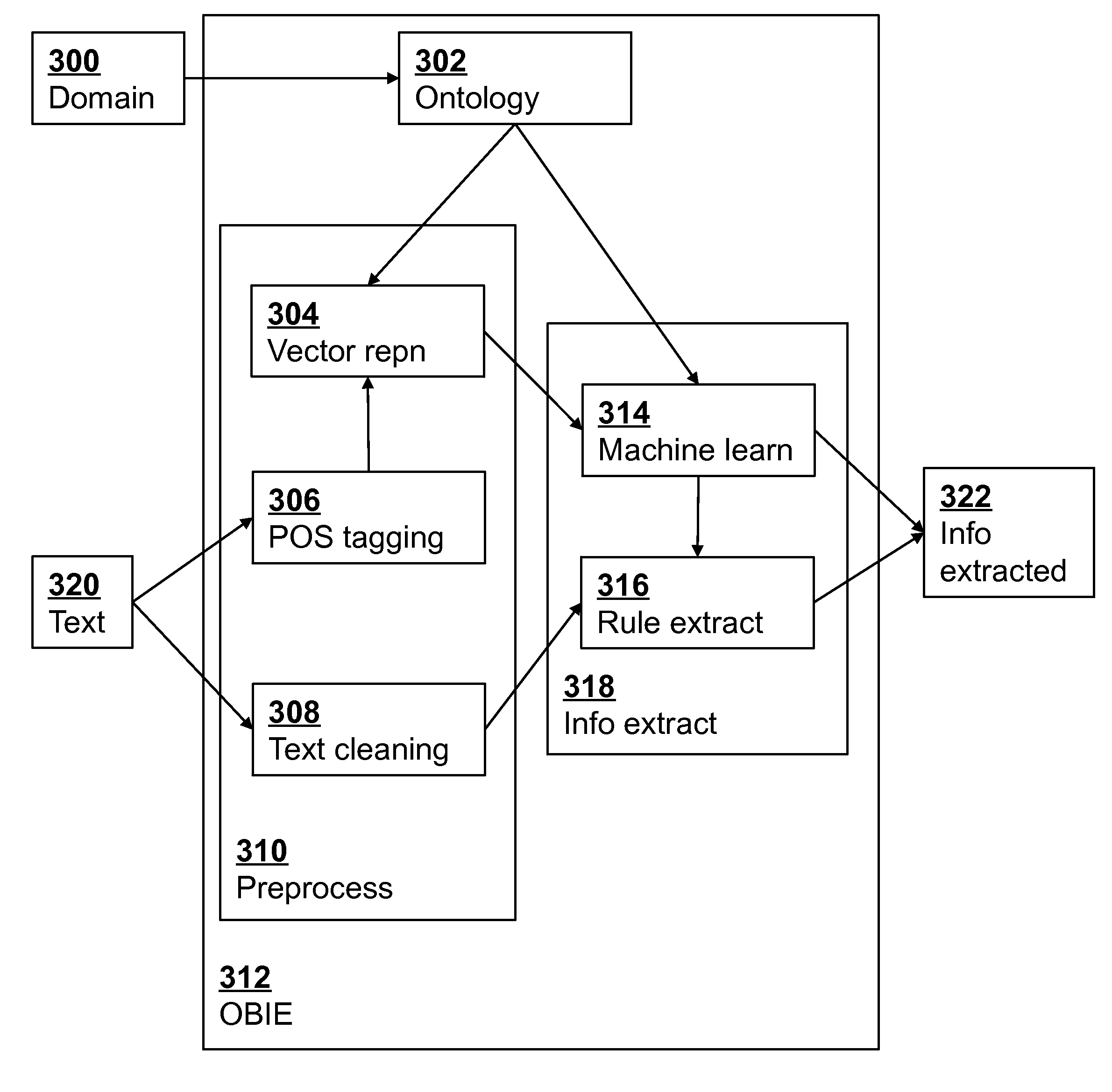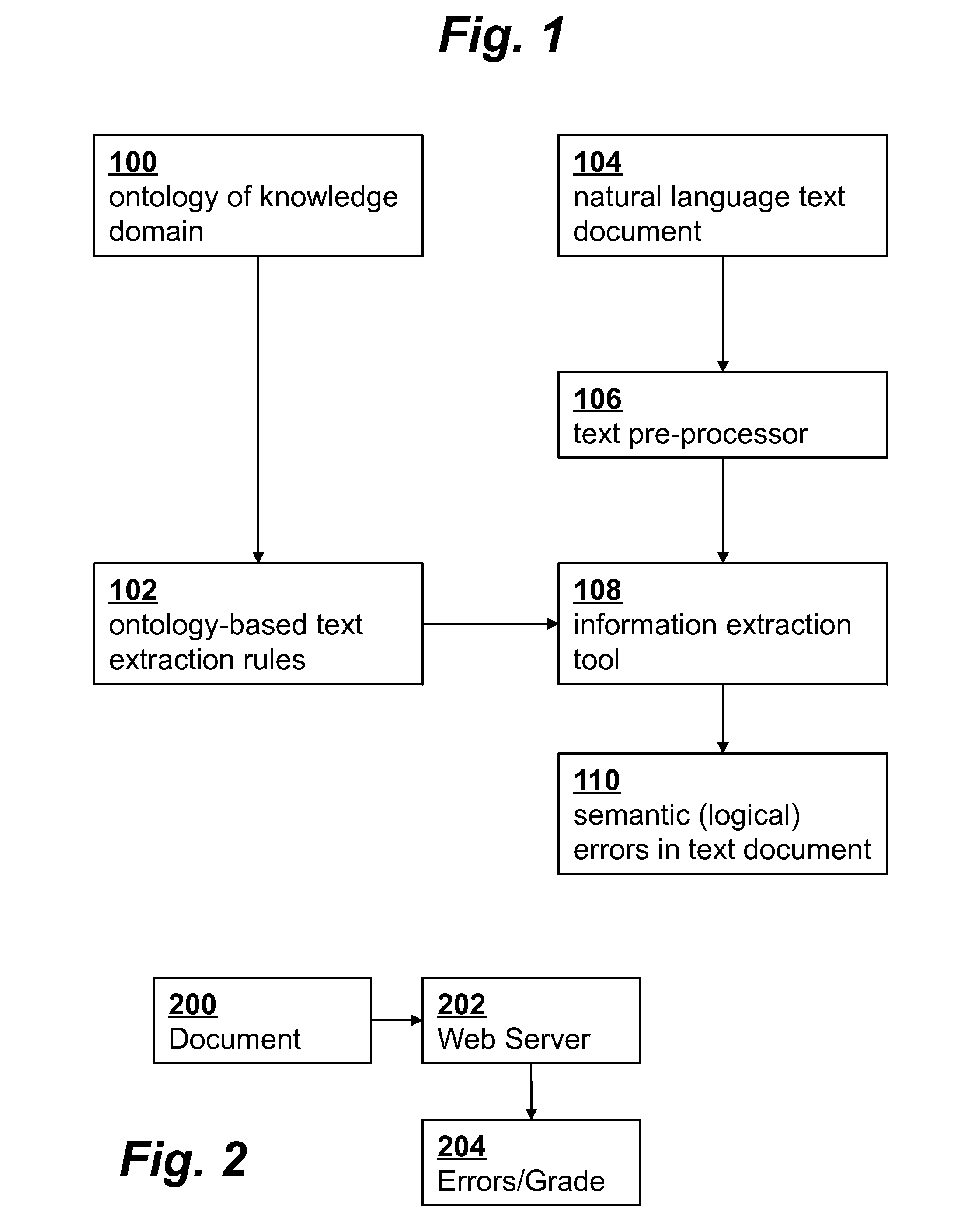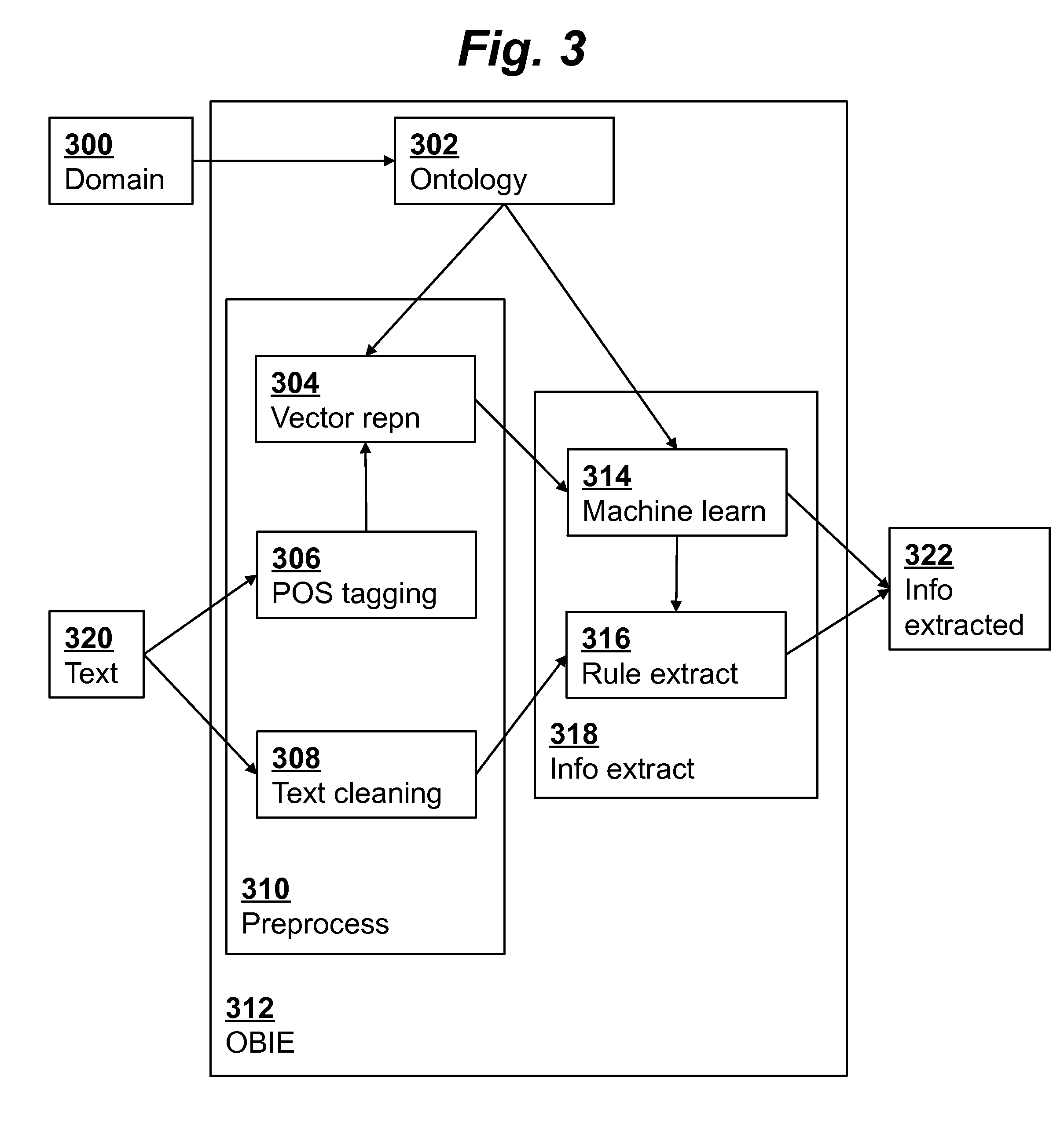Detecting Semantic Errors in Text Using Ontology-Based Extraction Rules
a semantic error and extraction rule technology, applied in semantic analysis, instruments, computing, etc., can solve the problems of incorrect use of correct terminology by students, inability to detect logical errors which reflect a student's misunderstanding of the proper relationship between words, and inability to detect logical errors which do not relate to the underlying meaning of the subject matter, etc., to achieve detailed and accurate feedback and more expressive power
- Summary
- Abstract
- Description
- Claims
- Application Information
AI Technical Summary
Benefits of technology
Problems solved by technology
Method used
Image
Examples
Embodiment Construction
[0019]In a preferred embodiment, the invention may be realized as an automatic grading system. Although embodiments described below will use the document grading application for the sake of definiteness, those skilled in the art will appreciate that the principles and techniques of the invention may also be used in a variety of applications.
[0020]FIG. 1 is a functional block diagram providing an overview of an embodiment of the invention.
[0021]An ontology 100 is selected based on the knowledge domain of relevance to the particular student writing assignment, e.g., a summary representing ecological concepts. The ontology 100 provides a formal representation of concepts and relationships of the knowledge domain. It includes a list of important concepts and their relationships. The relationships can be between different classes, between different properties, or between classes and properties. More specifically, an ontology includes classes (i.e., types of objects, kinds of things, or g...
PUM
 Login to View More
Login to View More Abstract
Description
Claims
Application Information
 Login to View More
Login to View More - R&D
- Intellectual Property
- Life Sciences
- Materials
- Tech Scout
- Unparalleled Data Quality
- Higher Quality Content
- 60% Fewer Hallucinations
Browse by: Latest US Patents, China's latest patents, Technical Efficacy Thesaurus, Application Domain, Technology Topic, Popular Technical Reports.
© 2025 PatSnap. All rights reserved.Legal|Privacy policy|Modern Slavery Act Transparency Statement|Sitemap|About US| Contact US: help@patsnap.com



